Tungsten, with its impressive properties of high melting point, density, and tensile strength, is a critical material used in various industries. The most prevalent form of tungsten is wire, which is used in electronics, lighting, medical devices, and aerospace applications. Recycling and sustainability of tungsten wire have become essential considerations for industries and researchers as the demand for sustainable practices increases. The purpose of this blog is to provide a thorough explanation of how tungsten wire can be recycled, its benefits, and its prospects for the future. This emphasizes its significance for achieving a more sustainable future.
Introduction to Tungsten Wire
Tungsten wire is a fine, high-strength filament made from tungsten metal. Known for its high melting point of 3422°C, tungsten wire is used in applications requiring materials that can withstand extreme temperatures and corrosive environments. Industries that benefit from tungsten wire include:
- Electronics: Used in the production of semiconductors and thin-film transistors.
- Lighting: Essential in the manufacturing of incandescent and halogen light bulbs.
- Medical: Employed in creating medical devices and equipment.
- Aerospace: Utilized for its high strength-to-weight ratio in critical components.
Despite its versatility and durability, the extraction and processing of tungsten have significant environmental impacts, driving the need for sustainable practices.
Environmental Impact of Tungsten Mining and Processing
Tungsten mining involves extracting ore from the earth, which is then processed to produce tungsten metal. This process has several environmental ramifications:
- Energy Consumption: Mining and processing tungsten ore are energy-intensive activities, contributing to carbon emissions.
- Water Usage: Large quantities of water are required, leading to potential depletion of local water resources.
- Chemical Pollution: The use of chemicals in processing can result in the contamination of soil and water bodies.
- Habitat Destruction: Mining operations can lead to deforestation and loss of biodiversity.
Given these impacts, recycling tungsten wire emerges as a crucial strategy to mitigate environmental damage and promote sustainability.
Recycling Methods for Tungsten
Recycling tungsten involves reclaiming tungsten from used products and manufacturing scrap. Several methods are employed to achieve this:
- Chemical Recycling: This process involves dissolving tungsten scrap in chemicals to separate tungsten from other materials. The tungsten is then precipitated and refined to produce pure tungsten powder, which can be reprocessed into wire.
- Mechanical Recycling: Mechanical methods involve physically breaking down tungsten-containing products to extract the metal. This can include crushing, grinding, and magnetic separation techniques.
- Hydrometallurgical Recycling: This method uses aqueous chemistry to dissolve tungsten from scrap materials. The dissolved tungsten is then recovered through precipitation or solvent extraction.
- Pyrometallurgical Recycling: Involves high-temperature processing to recover tungsten from scrap. This can include smelting and refining processes.
Each method has its advantages and limitations, but all contribute to reducing the environmental footprint of tungsten production.
Benefits of Recycling Tungsten Wire
Recycling tungsten wire offers numerous benefits, both environmentally and economically:
- Resource Conservation: Recycling reduces the need for virgin tungsten ore, conserving natural resources and reducing the environmental impact of mining.
- Energy Savings: Producing tungsten from recycled materials consumes less energy compared to extracting and processing raw ore.
- Waste Reduction: Recycling helps in managing industrial waste, reducing the volume of scrap sent to landfills.
- Economic Benefits: Recycled tungsten can be less expensive to produce, offering cost savings to manufacturers. Additionally, it can create job opportunities in the recycling sector.
- Sustainability: By reducing reliance on mining, recycling supports sustainable development goals and helps industries adhere to environmental regulations.

Challenges in Recycling Tungsten Wire
Despite its benefits, recycling tungsten wire poses several challenges:
- Material Purity: Ensuring the purity of recycled tungsten is crucial, as impurities can affect the performance of the wire in high-precision applications.
- Complex Processes: Recycling tungsten wire involves complex chemical and mechanical processes that require specialized equipment and expertise.
- Economic Viability: The cost of recycling can be high, particularly if the processes are not optimized or if the volume of scrap is low.
- Market Demand: The demand for recycled tungsten can fluctuate, impacting the economic feasibility of recycling operations.
Addressing these challenges requires ongoing research and innovation to develop more efficient and cost-effective recycling technologies.
Case Studies in Tungsten Wire Recycling
Several case studies highlight successful tungsten wire recycling initiatives:
- Electronics Industry: Companies in the electronics sector have implemented recycling programs to recover tungsten from end-of-life products such as smartphones and laptops. This not only recovers valuable materials but also helps in managing electronic waste.
- Lighting Industry: Manufacturers of incandescent and halogen bulbs have developed methods to recycle tungsten filaments, reducing the environmental impact of spent bulbs.
- Medical Devices: The medical industry has explored recycling tungsten components from used medical equipment, ensuring the safe disposal and recovery of high-value materials.
- Aerospace: Aerospace companies have invested in recycling technologies to reclaim tungsten from scrap generated during the manufacturing of aircraft components, promoting sustainability in an industry known for its stringent material requirements.
These case studies demonstrate the potential for tungsten wire recycling across various sectors, contributing to a circular economy.
Future Prospects of Tungsten Wire Recycling
The future of tungsten wire recycling looks promising, with several trends and advancements on the horizon:
- Technological Innovations: Advances in recycling technologies, such as improved chemical processes and automation, will enhance the efficiency and cost-effectiveness of tungsten recycling.
- Circular Economy: Increasing emphasis on a circular economy will drive the development of closed-loop recycling systems, where tungsten wire is continuously recycled and reused.
- Regulatory Support: Governments and regulatory bodies are likely to introduce stricter environmental regulations, incentivizing companies to adopt sustainable practices, including tungsten recycling.
- Collaboration and Partnerships: Collaboration between industries, research institutions, and governments will be crucial in developing and implementing effective recycling strategies.
- Consumer Awareness: Raising awareness among consumers about the importance of recycling and the environmental impact of tungsten mining can drive demand for recycled products.
Recycling and sustainability of tungsten wire are essential components of a broader strategy to reduce the environmental impact of industrial activities and promote sustainable development. Recycling methods can be used by industries to conserve natural resources, save energy, reduce waste, and support a circular economy. Research and innovation, allied with regulatory support and consumer awareness, will drive the future success of tungsten wire recycling. Recycling tungsten wire will play an important role in achieving environmental and economic goals. This ensures the continued availability of this critical material for generations to come.
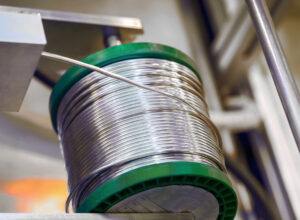
Nichrome Wire Safety: Top Tips for Working Safely
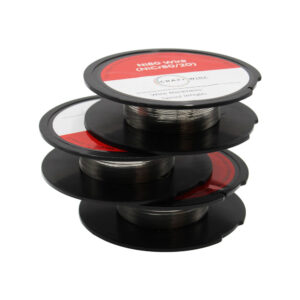
Best Wire for Electronics Projects
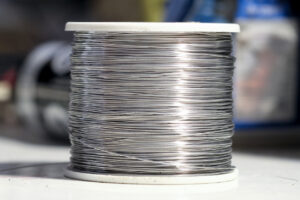
Is Ni80 Wire Suitable for DIY Heating Elements
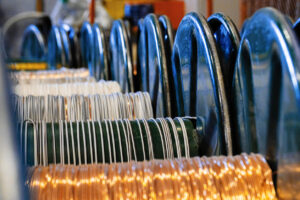
Wire Grades Explained
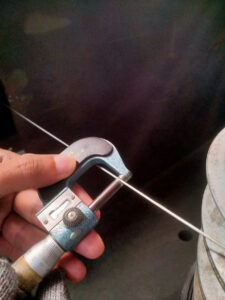
How Wire Diameter Affects Strength and Flexibility

How to Cut and Shape Wire for Custom Applications

Can Wire Be Used in 3D Printing?
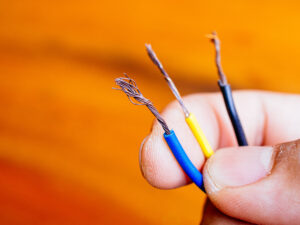
How Wire Composition Affects Conductivity
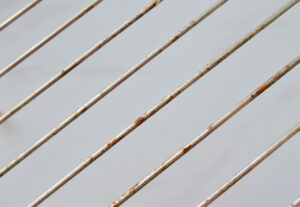
The Science Behind Wire Oxidation: Which Wires Resist Corrosion Best?
We offer also a massive range of stainless steel wire and nichrome wire through our store. Choose the wire that you want to work with and we’ll get spooling.
If you’re interested in learning more about wire, check out our other blog on Everything You Need to Know About Wires.
We are also proud to supply this product on our highly popular eBay store, check us out there too.
Thank you for checking out our site.

